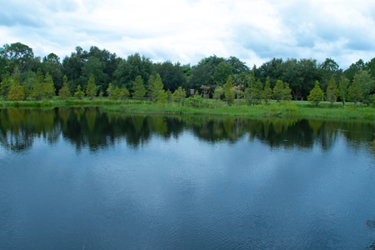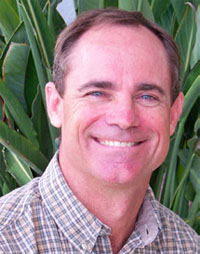Adopting A 'One Water' Approach In Florida Through Integrated Master Planning
By Mike Britt, Jon Dinges, and Jo Ann Jackson

A One Water master plan under development for the city of Winter Haven, Florida, serves as an example to other communities looking at the future through a One Water lens.
Aptly nicknamed “Chain of Lakes City,” Winter Haven is nestled east of Tampa in the middle of the Florida peninsula and is home to 50 lakes within or adjacent to its borders. In addition, Winter Haven is at the headwaters of the Peace River — its watershed a primary contributor to the Charlotte Harbor Estuary, the second-largest on Florida’s coastline. Winter Haven’s primary source of water, the Floridan aquifer system, is naturally replenished in the area through rainfall. This network of water resources is the inspiration for what is called the Sapphire Necklace, a natural solution and a vital component of what now has become Winter Haven’s One Water strategy.
Rapid Growth And Its Environmental Impact
Located in the second-fastest-growing region in the U.S., Winter Haven faced tension between growth and economic development and preserving and restoring natural systems. Rapid population growth and urbanization have resulted in even more stress on an already limited natural water supply, which had been severely impacted through ditching and draining over the past century.
Water scarcity issues in Winter Haven date back decades. The city is in the Southern Water Use Caution Area designated by the Southwest Florida Water Management District. As such, the city must comply with requirements over use of water. In addition, the location of the city brings its own set of challenges. Sitting at the highest elevation of the watershed means that the only water entering the city is through rainfall. With all these challenges, current estimates indicated that Winter Haven could exceed its consumptive use permit before 2035.
Despite these challenges, Winter Haven wanted to tell a different story. With a rapidly growing population coupled with limited water supply and historic loss of water resources, it was clear Winter Haven needed to make major, future-looking changes to restore, enhance, and protect its water ecosystem.
Looking At The Future Through A One Water Lens
Guided by Black & Veatch, a leading global provider of critical human infrastructure solutions, in 2019, Winter Haven initiated a regionally minded master plan based on the concept of One Water.
Spearheaded by the US Water Alliance, the One Water concept seeks to shift water resource management away from traditional linear (e.g., use and disposal) and segmented (e.g., drinking water, wastewater, and stormwater) thinking. Instead, it approaches water as a singular and recyclable resource where every drop in the use cycle has value. The concept of One Water was the city’s answer to all of its water challenges.
Winter Haven operates a water supply treatment and distribution system, a wastewater and reclaimed water system, and a stormwater system. The One Water master plan provides a roadmap for reducing stormwater runoff and wastewater discharge, recycling as much water as possible through infiltration and reuse. The focus is on integrating Winter Haven’s built and natural water systems.
Winter Haven’s One Water approach is supporting a resilient and sustainable water supply through restoration of the area’s lakes and wetlands to provide natural storage; reclamation and reuse of water resources using the latest technologies; and replenishment of area aquifers using nature-based solutions.
As a result of the plan, Winter Haven expects to see 5,000 acres of restored wetland nature parks, improved flood control and water quality, approximately 70 billion gallons of new water storage, high-quality waterfront development, and the ability to better balance the water budget.
A Small City With Big Ideas
Water, economic success of a community, and health of the environment are all interconnected — making Winter Haven’s One Water approach universally instructive. This small town of about 50,000 residents leveraged the same elements and frameworks that are being used in Los Angeles, which has a population of nearly 4 million. Not only does this illustrate forward-looking planning as the city continues to grow, but the city’s implementation of a One Water plan paves the way for smaller, growing towns to leverage water planning of larger cities, helping to mitigate the risks that come with a quickly growing population and the stress it puts on water resources.
In addition to its innovative, large-scale approach to implementing a One Water plan, Winter Haven used the nature-based solutions at its fingertips: its Sapphire Necklace. A centerpiece of the One Water plan, this network of natural lakes, restored wetlands, and floodplains provides an array of services, including storage, filtration, recharge, and flood protection. The network of nature presents opportunity to reinforce community character, provide nature-based community amenities, and capitalize on new development. With an emphasis on water-balance potential and future land use, the Sapphire Necklace is a key piece to Winter Haven’s One Water puzzle.
Growing In Concert With Nature
Winter Haven’s One Water plan illustrates how a small town can utilize the same water planning as used for larger urban areas — planning for a future of rapid growth and development while preserving its natural resources. Further, Winter Haven serves as a model for other towns seeking to implement a One Water plan on a larger scale.
About The Authors
 Mike Britt, One Water Project Manager, City of Winter Haven, is a professional engineer and water resource planner with 35 years of experience managing water in Central Florida. He has an undergraduate degree in civil engineering from Georgia Southern University and a master’s degree in urban and regional planning from Florida State University. Mike was the city of Winter Haven’s natural resources director for 25 years and assistant utilities director for seven years before taking his current position as the One Water project manager. Mike’s career focus has been the establishment of sustainable water management practices that consider the full value and benefit that water provides.
Mike Britt, One Water Project Manager, City of Winter Haven, is a professional engineer and water resource planner with 35 years of experience managing water in Central Florida. He has an undergraduate degree in civil engineering from Georgia Southern University and a master’s degree in urban and regional planning from Florida State University. Mike was the city of Winter Haven’s natural resources director for 25 years and assistant utilities director for seven years before taking his current position as the One Water project manager. Mike’s career focus has been the establishment of sustainable water management practices that consider the full value and benefit that water provides.
 Jon Dinges, Regional Water Resources Lead, Black & Veatch, has more than 27 years of experience in water resources engineering. He has managed a diverse array of programs and projects including storm water, floodplain management, water supply assessment and planning, water quality improvement, hydrologic restoration, minimum flows and levels, reclaimed water, natural systems restoration, and integrated water resource management planning.
Jon Dinges, Regional Water Resources Lead, Black & Veatch, has more than 27 years of experience in water resources engineering. He has managed a diverse array of programs and projects including storm water, floodplain management, water supply assessment and planning, water quality improvement, hydrologic restoration, minimum flows and levels, reclaimed water, natural systems restoration, and integrated water resource management planning.
 Jo Ann Jackson, One Water Practice Leader, Black & Veatch, has a strong background in water supply and water reuse planning, spanning her 35-year career. Her experience includes nearly every type of water reuse from traditional urban irrigation programs to environmental enhancement/wetland treatment systems to potable reuse. For six years, she worked directly for city government, overseeing the city of Altamonte Spring’s water, wastewater, and reuse systems, which has given her a utility perspective to complement her consulting background. She formerly served as a director of the Florida Water Environment Association Utility Council and was selected to serve as a utility appointee to the Florida Potable Reuse Commission, charged with developing a regulatory framework for potable reuse in Florida.
Jo Ann Jackson, One Water Practice Leader, Black & Veatch, has a strong background in water supply and water reuse planning, spanning her 35-year career. Her experience includes nearly every type of water reuse from traditional urban irrigation programs to environmental enhancement/wetland treatment systems to potable reuse. For six years, she worked directly for city government, overseeing the city of Altamonte Spring’s water, wastewater, and reuse systems, which has given her a utility perspective to complement her consulting background. She formerly served as a director of the Florida Water Environment Association Utility Council and was selected to serve as a utility appointee to the Florida Potable Reuse Commission, charged with developing a regulatory framework for potable reuse in Florida.
